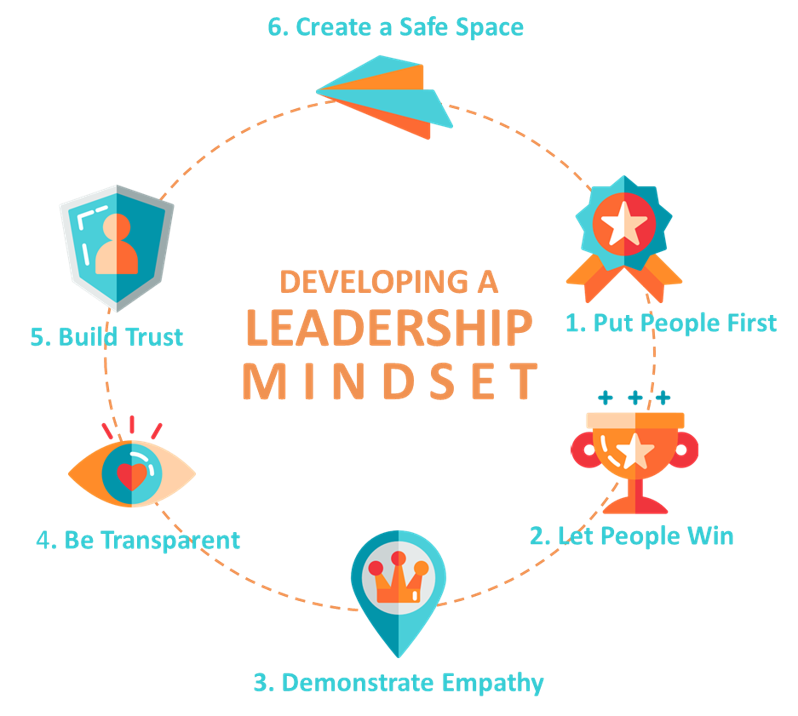"Developing a Leadership Mindset"
![]()
Enabling Managers to Create a Safe Space in the Workplace
For this course, we welcome open admission and individual enrolment.
Only a new Leadership Mindset can create a Safe Environment
1. Update your leadership mindset with the help of human principles.
2. Create an emotional safe environment (Safe Space) for your organization and team.
3. Receive coaching to implement the content to handle obstacles.
4. Experience a new dynamic in the workplace, leading to better results.
______________________________________________________________________________
"The greatest discovery of all time is that a person can change his life
by changing his state of mind." William James
______________________________________________________________________________

Course Content
Let's change the Paradigm of leadership!
1. Put People First
Show honest appreciation and respect
"I want to focus on the welfare of my employees, because they are my most important asset."
-----------------------------------------
2. Let People Win
Give true support and recognition
"I want to invest in my people and take care of them, so they can progress in their careers."
________________________________
3. Demonstrate Empathy
Give feedback and show understanding
"I want to understand the needs of my people, so they are able to focus on delivering results."
____________________________
4. Be Transparent
Be authentic and honest about yourself
"I want to be open, having nothing to hide, and be honest about my areas of development."
______________________________
5. Build Trust
Honour your values and keep your commitments
"I want to show my intentions, stick to my personal values and keep my commitments."
_______________________________
6. Create Emotional Safety
Model and encourage desired behaviour
"I want to show my employees what a safe space looks like and invite them to participate."
___________________________________________________
Target Group
Individuals and Groups
Open admission and Individual Enrolment is possible
Young and Aspiring Managers
Department Heads / Team Leaders
Project Managers / Site Managers
All persons preparing for these positions
Management Teams
(Learning the foundation for building an Emotional Safe Environment)
_____________________________________________________________________________
Trainer Rob G. M. Bots
Information Trainer Trainer Rob G. M. Bots
_____________________________________________________________________________
Creating a Safe Space Creating a Safe Space Safe Space and Culture Safe Space and Culture


